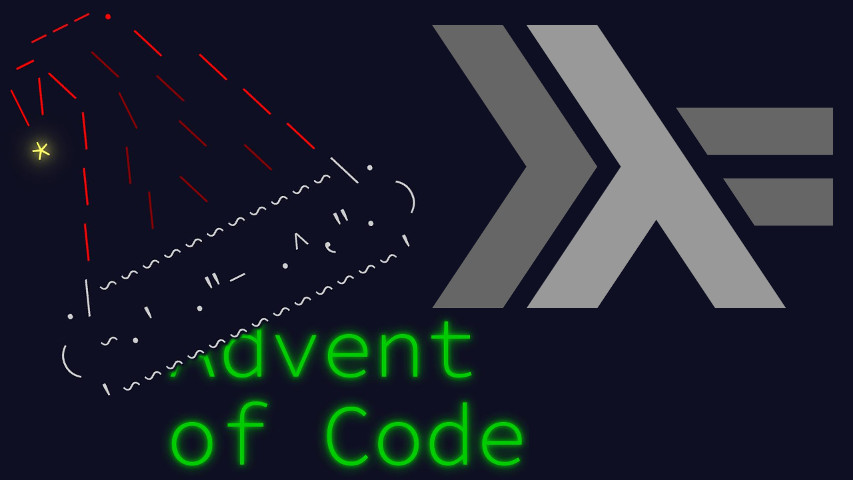Day 17 of Advent of Code, “Trick Shot”, asks us for information about shooting an object at a target under specific physics. It is peculiar in that I didn’t reach for code until part 2. So what you’ll read here, as a part of a Haskell series, is a retro-implementation of it. Still as literate Haskell, with a few imports that decidedly have nowhere else to go than the start:
import Control.Arrow ((&&&))
import Data.Ix (range,inRange)
import Text.Regex.Posix ((=~),AllTextSubmatches(..))Let’s have a bit of regex parsing, for a change.
data Bounds = Bounds
{ xl :: !Int
, xr :: !Int
, yb :: !Int
, yt :: !Int
}
parse :: String -> Bounds
parse l = Bounds{..} where
[_,xl,xr,yb,yt] = map read . getAllTextSubmatches $
l =~ "target area: x=([0-9]+)\\.\\.([0-9]+), y=(-[0-9]+)\\.\\.(-[0-9]+)"For part 1, we are asked the highest the object can reach on a course to target.
It’s obvious that the stronger we shoot up, the higher the object will reach. So the question reduces to: “what’s the stronger up we can shoot while still reaching the target?”
In the puzzle’s physics system, the vertical velocity decreases by 1 at every turn. The target is in the negative half of the Y axis space. So the key observation is that no matter what strength we shoot up, the object will always come back to \(y=0\) in an integer number of steps. What’s its Y value one step after that? Exactly one below the initial vertical velocity!
So if we shoot upwards with \(\left|\max\ y_\mathrm{target}\right|-1 \le v_{y0} \le \left|\min\ y_\mathrm{target}\right| - 1\), we’re guaranteed to hit. That’s not necessarily the only \(v_y\) range that hits, but we can dismiss the others as smaller, so reaching lower.
What about the X coordinate? In the puzzle, the horizontal velocity goes one closer to 0 at every step. So we’re able to reach all X positions of the form \(\pm {n(n+1)\over 2}\) in \(n\) steps, then stay there as the horizontal velocity clamps to 0. So we’d need to verify:
- that the target’s width is wider enough than the square root of the target’s left X coordinate, so that at least one point in the target is reachable;
- that the square root of the left coordinate is smaller enough than double the initial vertical velocity, a.k.a. the vertical time to reach the target.
Which is the case for my input, and most likely yours too.
That cleared, the answer is a simple summation of all positive \(v_y\)s from launch to vertex.
part1 :: Bounds -> Int
part1 Bounds{..} = yb * (yb+1) `div` 2For part 2, we want to count the number of throws that would succeed. We could write out the math and optimize, but the search space is small enough that it’d be a waste of engineering time: we’ll simply simulate throws and tally.
simulate :: Bounds -> (Int,Int) -> Bool
simulate Bounds{..} = go (0,0) where
go (x,y) (vx,vy)
| inRange (xl,xr) x && inRange (yb,yt) y = True
| vx == 0 && (x < xl || x > xr) = False
| y < yb = False
| otherwise = go (x+vx,y+vy) (vx - signum vx,vy-1)We do need cutouts, since the trajectories are unbounded. I stop when either:
- horizontal velocity has clamped, and it’s not over the target; or
- vertical position has gone beneath the target.
I also need to figure out a bounded set of starting velocities. We already have the upper vertical bound from part 1. A lower trivial bound is the target’s minimum Y itself. Horizontally, I don’t want to bother identifying which bands hit or miss, so I’ll cover the entire range from \(0\) to the target’s maximum X.
part2 :: Bounds -> Int
part2 Bounds{..} =
length $ filter (simulate Bounds{..}) $ range ((0,yb),(xr,-yb-1))A trivial wrapper sums it up.
main :: IO ()
main = interact $ show . (part1 &&& part2) . parseThis concludes today’s solution. See you tomorrow!



